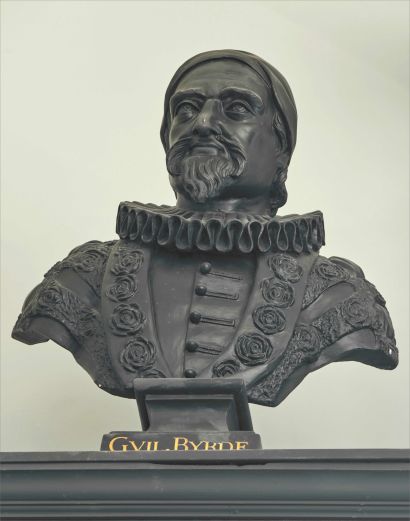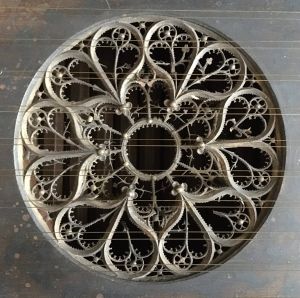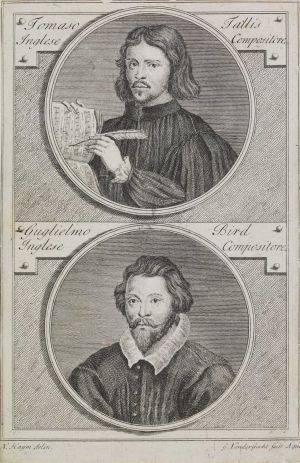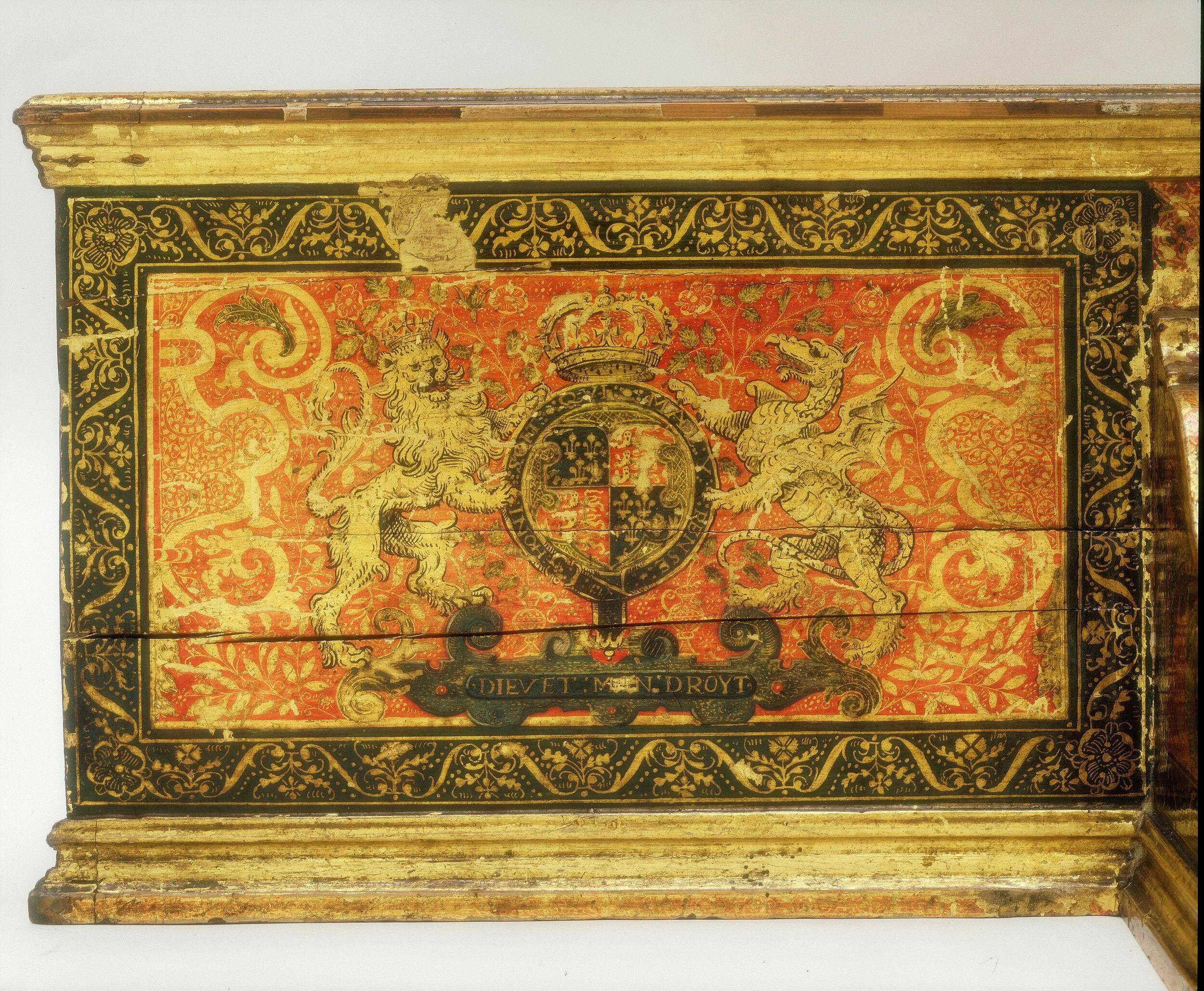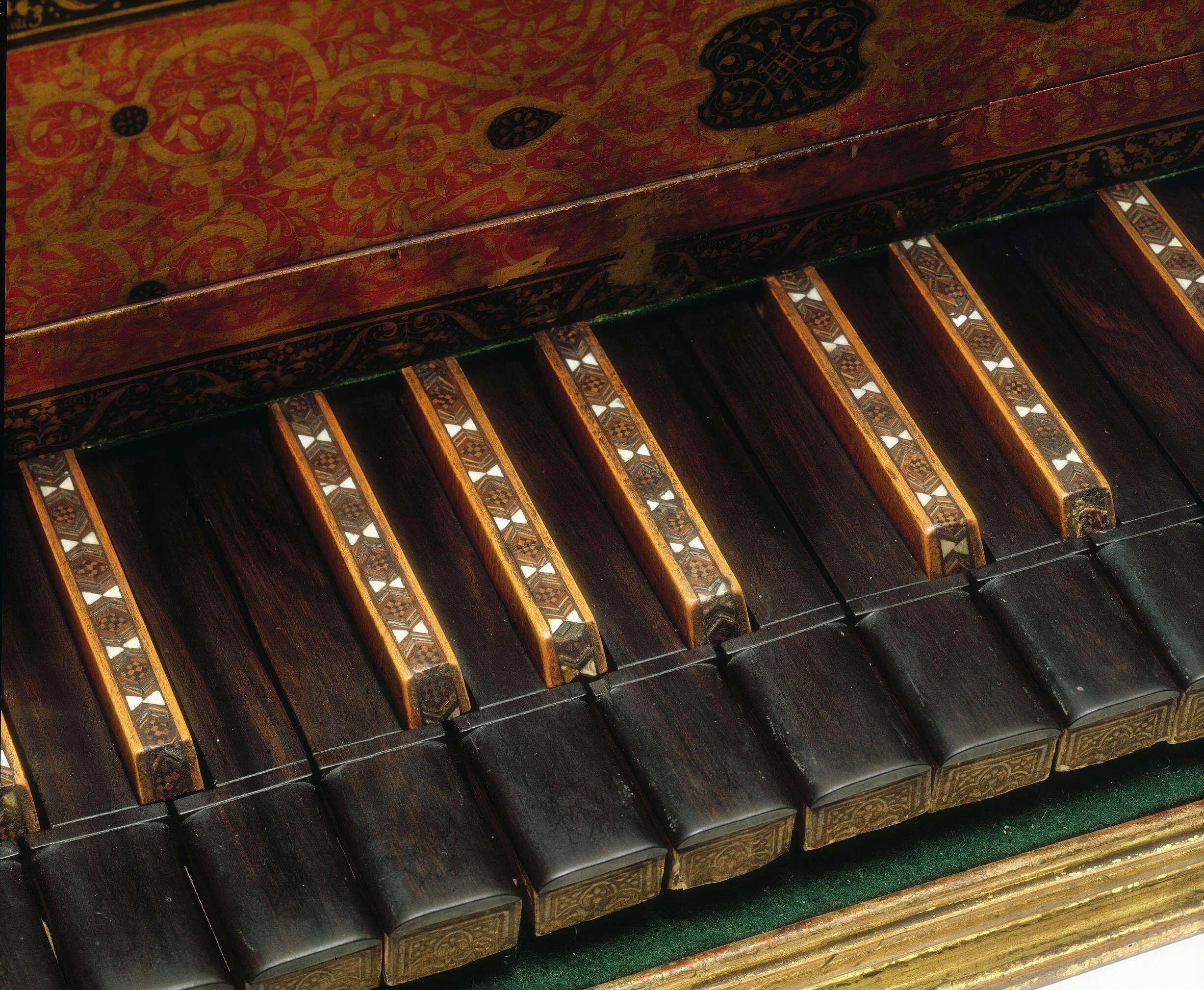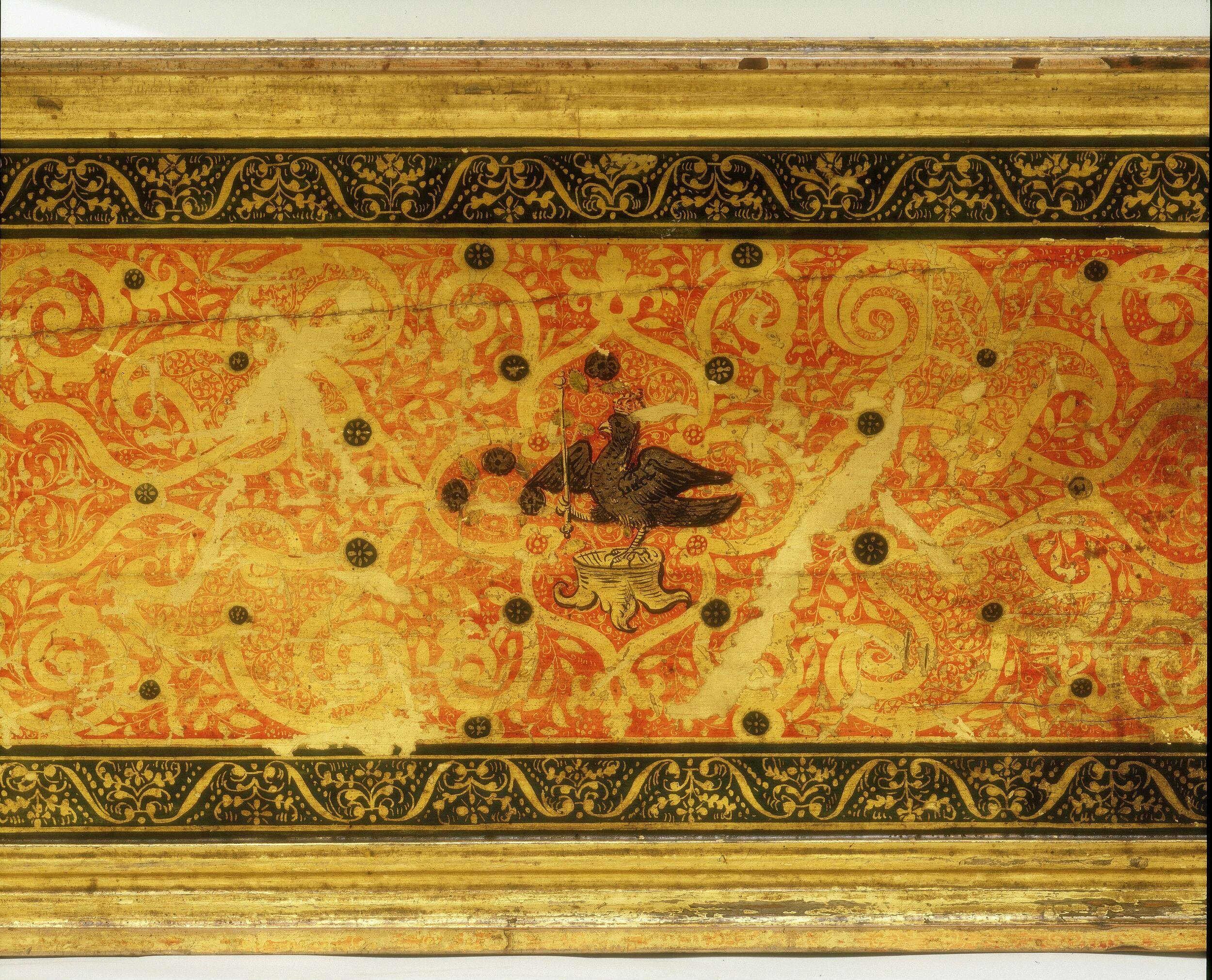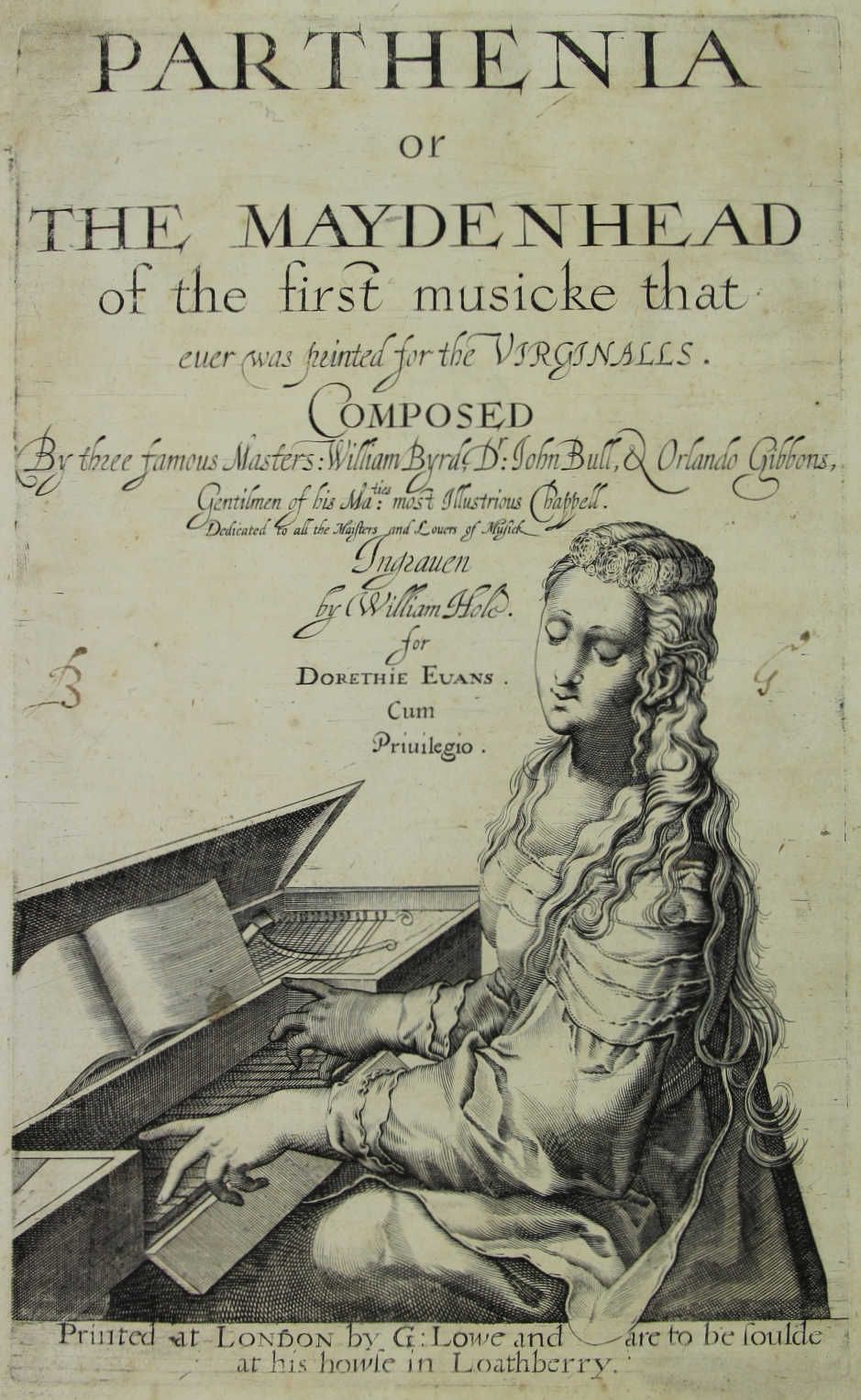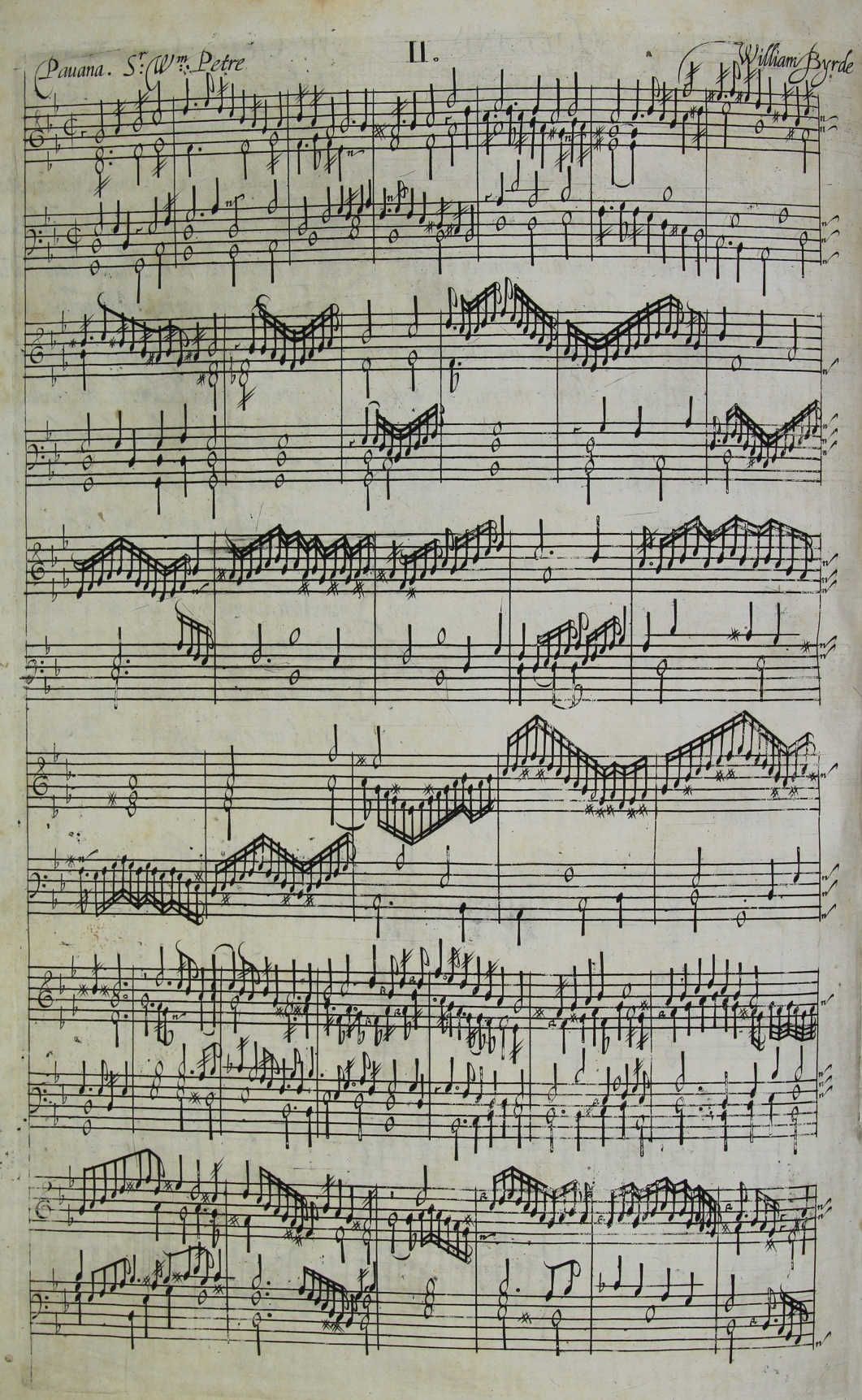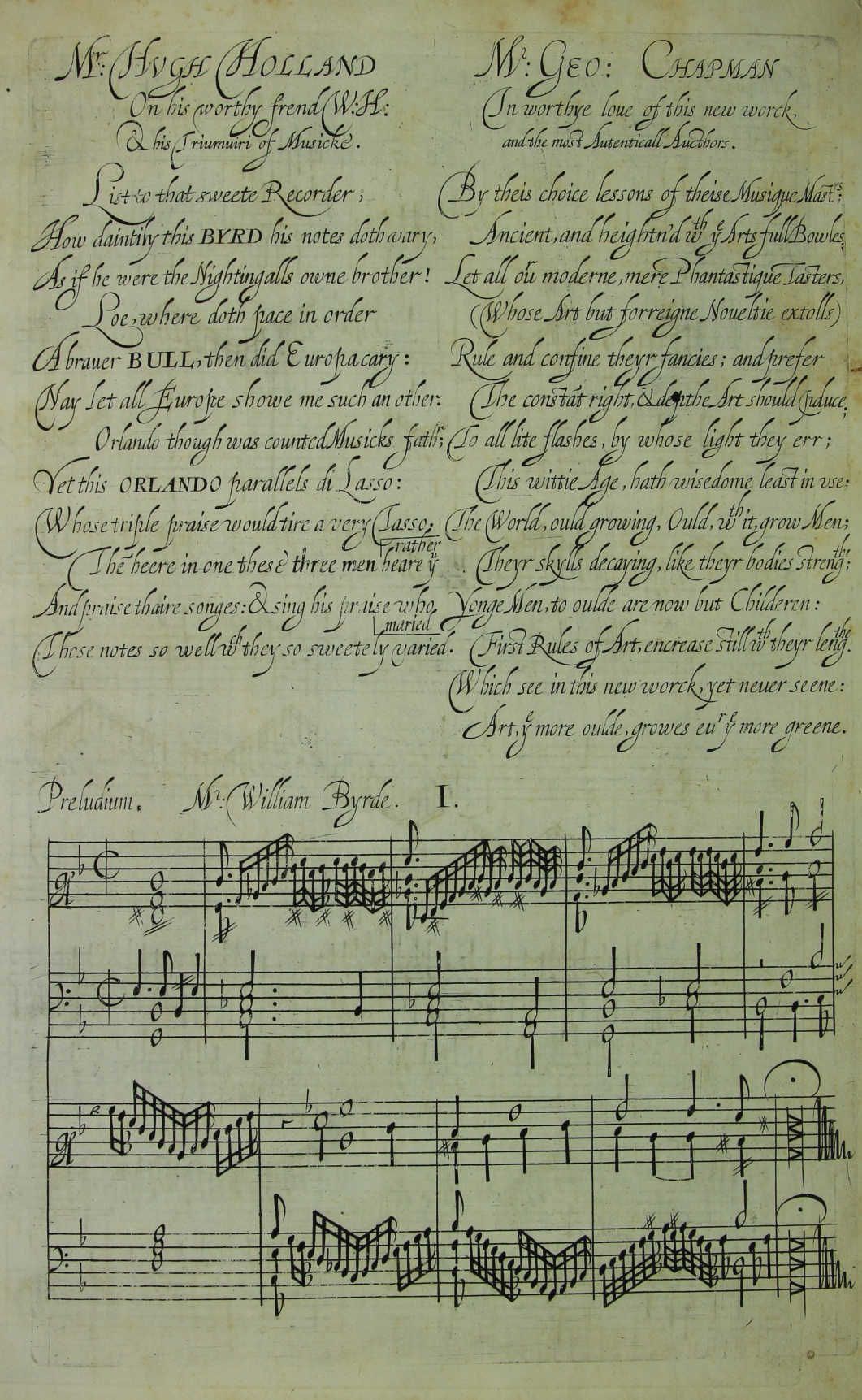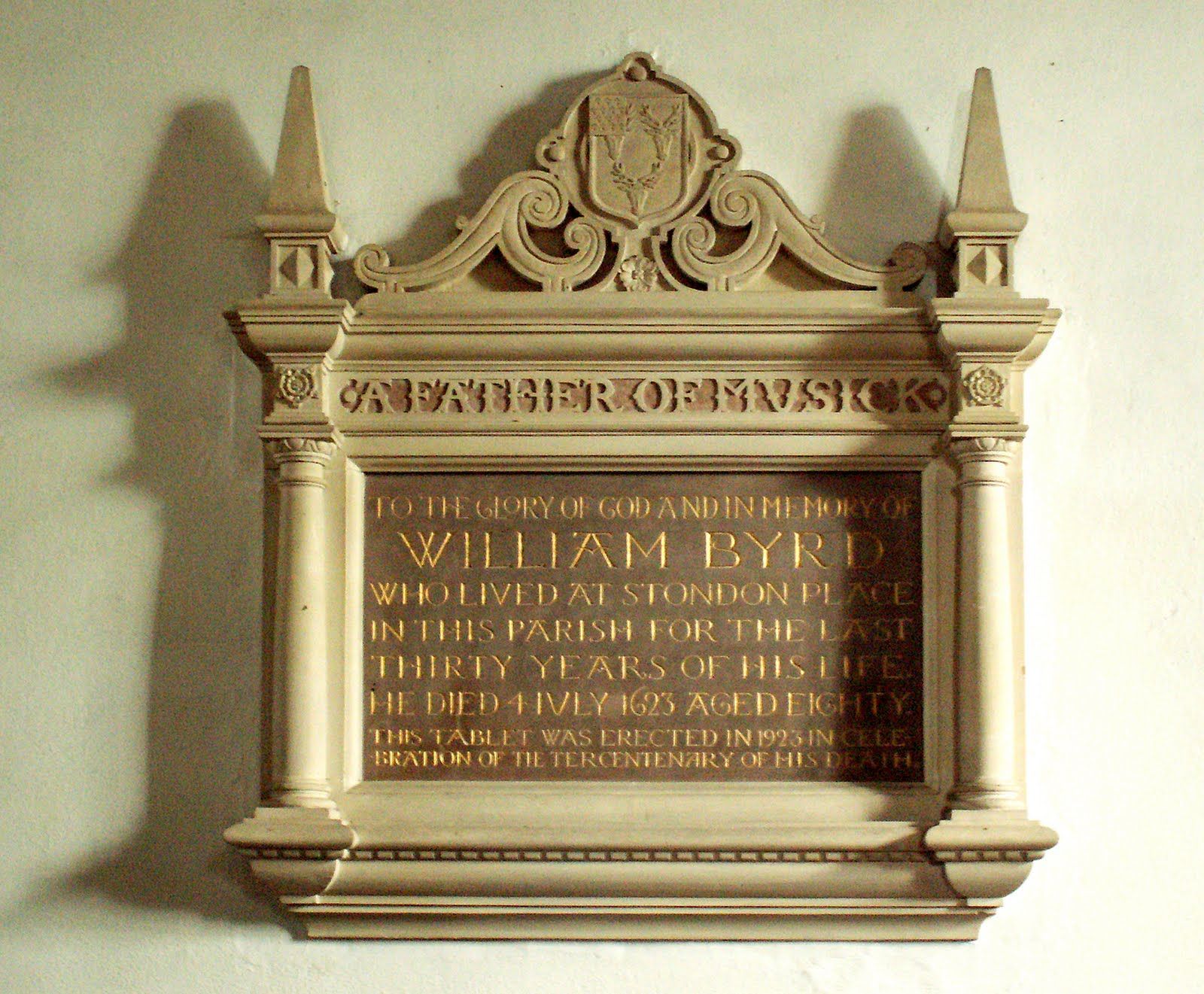Exhibition
William BYRD (b.London, c.1540; d.Stondon Massey, Essex, 4 July 1623)
July 2023
William Byrd was the most important English composer of the sixteenth century and one of the greatest figures in all Renaissance music.
Writing in 1985, Stanley Sadie said: “The range, versatility and outstanding quality of his work set him above his English contemporaries and successors; he is often referred to as the English counterpart to Palestrina and Lassus. He was the last great English composer of Catholic church music and the first of the ‘golden’ Elizabethan age of secular and instrumental music”.
He wrote sacred and secular music for voices, fantasias for viol consort and dances, variations and grounds for keyboard.
While the date and place of his birth, previously believed to be Lincoln in 1543, has been revised in light of new evidence in recent years, the four hundredth anniversary of his death which we mark on 4th July this year is in no doubt.
Rose. Detail of the soundboard from the Marcus Siculus virginals of 1540 made in the year that Byrd was born. (Benton Fletcher Collection, Fenton House, The National Trust). © Ben Marks.
He was almost certainly a boy chorister in London and he may have been a pupil of Thomas Tallis (1505-85) at the Chapel Royal. It is significant that Byrd’s formative years coincided with a time of great turbulence. During the reign of Mary Tudor (1553-58) Catholicism again became the official religion and many Protestants were burned as heretics. When England returned to Protestantism at the accession of Queen Elizabeth I, the Act of Uniformity of 1559 forbade the celebration of the Catholic Mass. Catholics once again lived in fear of the State and many were executed. Despite the dangers, Byrd, by then 18 or 19, remained a devout Catholic practising in secret for the rest of his life.
Byrd wrote prolifically for both Catholic and Anglican churches. Three masterly settings of the ‘Ordinary’ of the Catholic Mass (3, 4 and 5 parts), and his Gradualia, a complete cycle of ‘Propers’, a collection of 109 motets for all the feast days of the Catholic liturgical year in which “restraint and expressiveness…are shown at their finest”, according to Stanley Sadie. In his Ave Verum Corpus for four voices, first published in volume one, Byrd “makes his effects with telling harmony…using false relation”, a device much used by English composers of the time. Byrd excels in using imitative counterpoint as an expressive device often in a more harmonically daring way than his contemporaries such as Palestrina, with imitation not just at the 4th, 5th or octave but at any pitch thus creating a varied chromaticism.
Byrd also wrote many Services for the Anglican church, English settings of the Magnificat and Nunc dimittis, Te Deum and Jubilate as well as sixty English anthems, often with organ or other instrumental accompaniment. Many of these, the Short Service and his Great Service have never fallen out of use in the Church of England. These large–scale choral pieces could also include solo vocal parts in contrast, where as his Catholic music was often performed with one voice to a part out of necessity in secret celebrations of the Mass. Both his Latin and Anglican church music range from the deeply contemplative to the exuberant. Sadie says of the six–part anthem, Sing Joyfully: “the overlapping voice-parts ring out like glorious peals of bells”.
On 25th March 1563, around the age of 23, Byrd was appointed Organist and Master of the Choristers at Lincoln Cathedral remaining there for nine years during which time he married Julia Birley and the first two of his seven children were born. The militant anti-Catholic John Aylmer was Archdeacon of Lincoln from 1562 -77 which could not have been comfortable for Byrd. In 1570 he was appointed as a singer in the Chapel Royal at the Court of Elizabeth I based at Whitehall Palace in London, although he remained at Lincoln until becoming joint Organist of the Chapel Royal with Thomas Tallis in 1572. Tallis being around thirty-five years his senior was his mentor, much as Haydn was to Mozart. They also worked closely together, being granted jointly in 1575 a twenty–one year Royal monopoly on importing, publishing and printing music in England and also on the sale of printed manuscript paper. Taking full advantage of this they produced the first volume of Cantiones Sacrae the same year. It contained 34 Motets, 17 by Tallis and 17 by Byrd, which they dedicated to the Queen.
Tallis / Byrd. Double portrait of Tomaso Tallis Inglese Compositore and Guglielmo Bird Inglese Compositore. Print made by Gerard Vandergucht (1696-1776) after Nicola Francesco Haym (1679-1729). London, c.1730-1770. © The Trustees of the British Museum.
When Tallis died in 1585 he left the remainder of the printing patent entirely to Byrd. Before it expired in 1596 Byrd published a great deal more of his work comprising about 110 pieces in which he writes intricate counterpoint very much in the style of Tallis and Taverner (1490-1545).
In his secular music Byrd expressed a wide range of emotions; as he said, “framed to the life of the words” but he did not compose madrigals as such, although he imported them as a publisher. The late flowering of the Italian Madrigal in England came with the next generation lead by his pupil Thomas Morley (1557-1602). In 1588 Byrd published two volumes of English settings for secular use, mostly accompanied by viol consort, entitled Psalms, Sonnets and Songs of Pietie which were sponsored by, and dedicated to, Sir Christopher Hatton, the Lord Chancellor and performed at his palace, Holdenby; and in 1589, Songs of Sundrie Natures dedicated to Baron Hunsdon, the Lord Chamberlain and first cousin to the Queen.
There followed two more sets of Latin motets Cantiones Sacrae in 1589 and 1591, composed and daringly published for private Catholic use. These were expediently dedicated to Edward Somerset, 4th Earl of Worcester (1553-1628), a great friend and patron of Byrd and a close friend of the Queen, and the second set to Baron Lumly. Both dedicatees were prominent Catholics.
This publication included Infelix ego, Byrd’s emotionally intense setting of a text with which he clearly identified as one living in fear of the Protestant State: “Unhappy I, where shall I turn? On earth I find no refuge, have mercy on me God”, yet it was written by a Dominican monk the night before he was executed for heresy in Florence in 1498. Byrd was making a profound public statement that ‘State religion’ of whichever denomination was being used as a terrifying tool of political power and had little to do with genuine personal spiritual belief.
It is remarkable that Byrd, as a practising Catholic, remained in court service throughout his long life and seemed to navigate with uncanny deftness the stormy seas of religious persecution. This was certainly due to Byrd’s patrons and especially his relationship with the Petre family. Sir William Petre (1505-72), Tallis’s contemporary, had been Secretary of State to the three successive monarchs before Queen Elizabeth I, and deputised as her Secretary of State. A lawyer educated at Oxford, he was a diplomat of exceptional skill; it was said that his manner was “smooth, reserved, resolved and obliging” and he avoided the grim fate of all those around him.
He was a major benefactor of Exeter College, Oxford and set up scholarships at All Souls College, Oxford where William Byrd became a fellow in 1578. (see main image)
Sir William Petre’s only surviving son, Sir John Petre (1549-1613) was a close friend and patron of Byrd, and a talented amateur musician. He kept a fine set of musical instruments including a chest of five viols, lutes, virginals and an organ at Ingatestone Hall in Essex. It had two priest holes built into its thick walls; as a practising Catholic he sheltered recusants fleeing persecution.
Byrd’s Catholic liturgical music was performed there, the second set of Gradualia (Volume 1, 1605 and Volume 2 1607) was dedicated to Sir John Petre: “They mostly proceed from your house which is most friendly to me and mine”. The risk was considerable; both volumes had to be withdrawn from publication, to be re-issued in 1610. In 1611 the last volume of Psalms Songs and Sonnets contained both sacred and secular music.
In 1577 John Aylmer left Lincoln to become Bishop of London and with the enforcement of laws of recusancy (failure to attend Anglican services) Byrd’s family received written indictments and moved to Harlington, Middlesex, staying away from London during a period of persecution of Catholics. Bishop Aylmer remained in office at Fulham Palace until 1594. Byrd’s family were pursued until a note was received in 1592 saying: “Let the trial cease by order of the Queen”. Byrd moved to Stondon Massey in Essex in 1593, just five miles from Ingatestone Hall where he remained there for the last thirty years of his life.
Despite Byrd’s close social contact with the recusant Catholic community his loyalty to the Queen was never in question. Byrd was undoubtedly a favourite of the Queen and he flourished under her protection. Being a ‘Royal Peculiar’, the Chapel Royal was outside the jurisdiction of the Bishop of London.
The Queen loved music and was an accomplished keyboard player; many pieces were dedicated to her such as Byrd’s The Queenes Alman (preserved in the Fitzwilliam Virginal Book). The instrument commissioned for the Queen’s personal use was a very fine Italian spinet, made by Giovanni Antonio Baffo in Venice in about 1570. Always known as ‘Queen Elizabeth’s Virginals’, it bears the royal arms. It is extremely likely that Byrd played this instrument.
Queen Elizabeth’s Virginals made by Giovanni Antonio Baffo, Venice, c.1570. The spinet almost certainly belonged to Elizabeth I. It bears the royal coat of arms and the falcon holding a sceptre, the private emblem of her mother, Anne Boleyn. Elizabeth is reported to have played ‘excellently well…when she was solitary, to shun melancholy’. © Victoria and Albert Museum, London.
Byrd made ground-breaking developments in both keyboard technique and complexity of texture and form in his fantasias, dances and variations which display a mastery of counterpoint and a fertile imagination. One of the finest examples is the The Bells. From the first rising tone of the ground, the logic of the musical argument unfolds with a clarity of thought and fine craftmanship which prefigures that of J.S. Bach. It might be seen almost as a madrigal without words, its imagery giving a perfect depiction of ‘change ringing’ stylised in variation form with brilliance and originality.
By such pieces Byrd raised keyboard music to new intellectual heights of abstraction and set the standard for the Golden Age of Elizabethan keyboard music and the next generation including Orlando Gibbons (1583-1625), Dr John Bull (1562 -1628), Giles Farnaby (1563-1640) and Thomas Tomkins (1572-1656).
In 1591 Byrd issued his first collection of keyboard music under the title My Lady Nevells Booke comprising 42 pieces (probably dedicated to Elizabeth, wife of Sir Henry Nevill). Keyboard music was distributed in manuscript copies during the sixteenth century, many being exquisitely produced works of art in themselves. Because keyboard music was far more complex to print than music for voices, owing to rapid passages and changes in rhythmic notation, it was not until the early seventeenth century that it became technically possible to print it using engraved copper plates. In 1612 Parthenia or Maydenhead of the first music that was ever printed for the Virginals was published as a joint anthology of 21 pieces by Byrd, Gibbons and Bull.
1. Parthenia or the Maydenhead of the first musicke that ever was printed for the Virginalls. Title page. The British Library. 2. Pavana dedicated to Sir William Petre. 3. Poem and Preludium.
Together, My Lady Nevells Book, Parthenia and the Fitzwilliam Virginal Book comprise the most important collection of Renaissance English keyboard music.
The largest of these by far is the Fitzwilliam Virginal Book which contains over 300 pieces, 67 by Byrd, copied by another well-known Catholic recusant, Francis Tregian while being held in the Fleet Prison where he died in 1617.
Byrd died at his house, Stondon Place, aged about 83. During his lifetime his reputation was immense. The memorial erected in 1923 at St Peter and St Paul church, Stondon Massey, records that he was known in his lifetime as “A Father of Musick”.
© Nicholas Lane 2023
Monument erected in 1923 in celebration of the tercentenary of his death. St. Peter and St. Paul, Stondon Massey, Essex. Photograph by Michael Harris.
